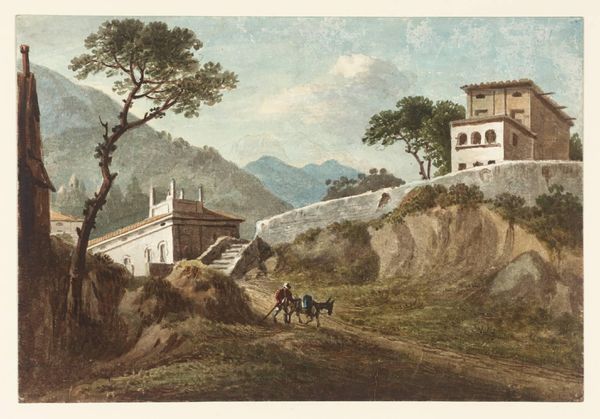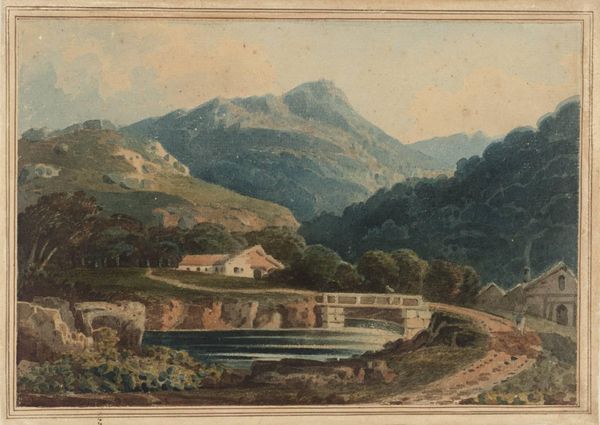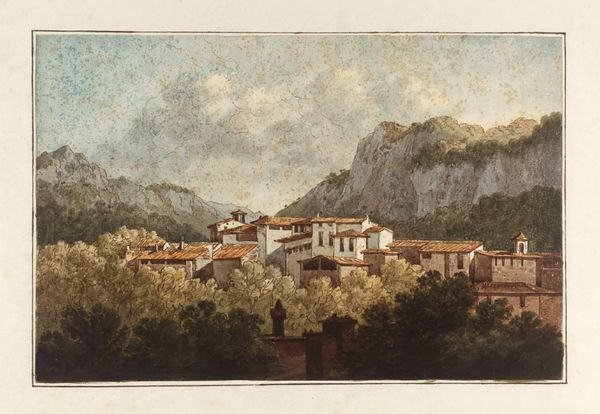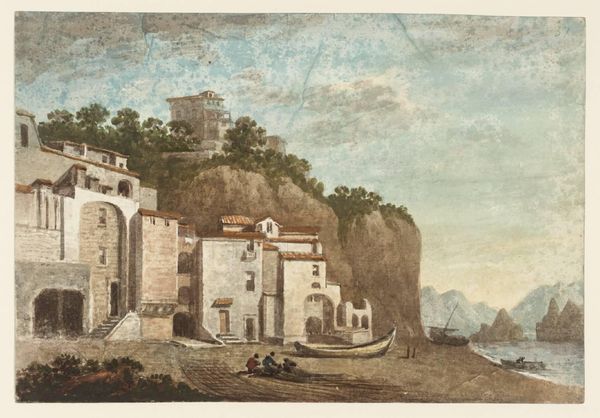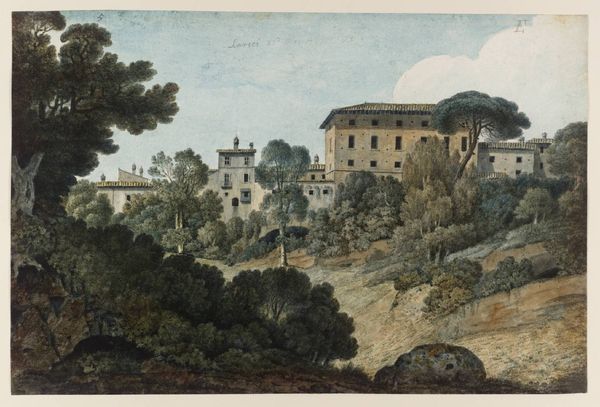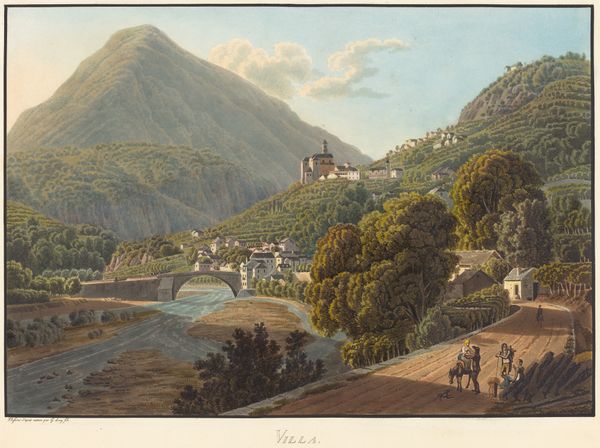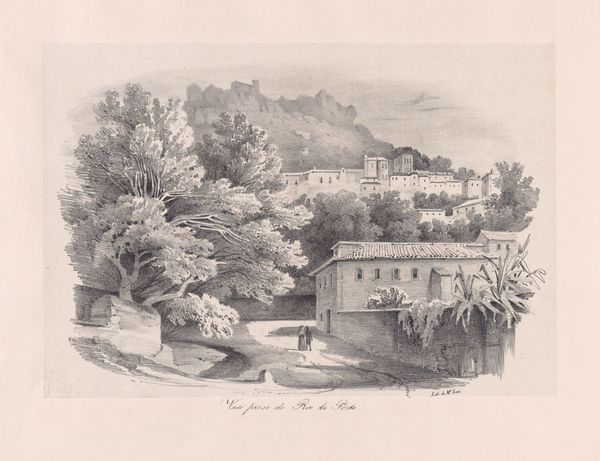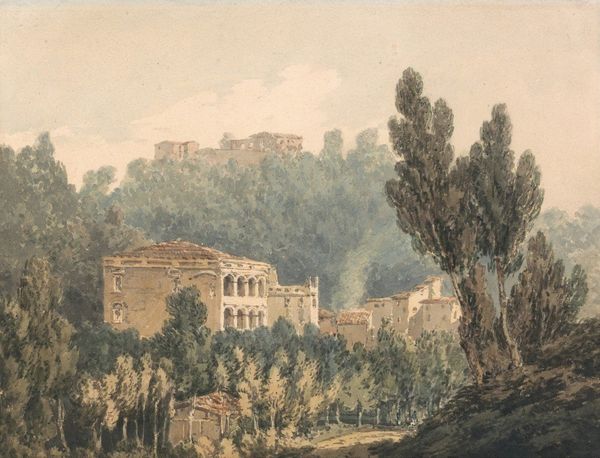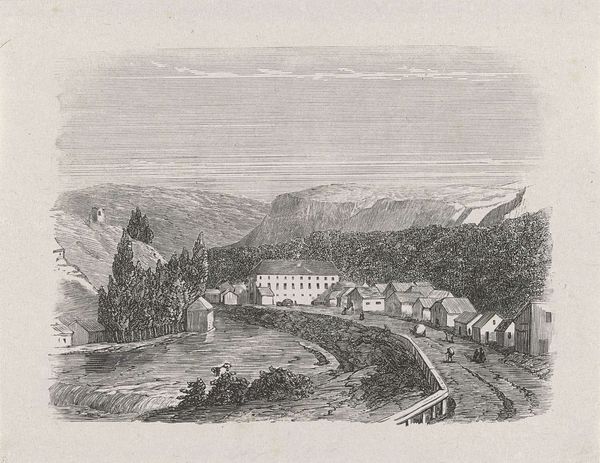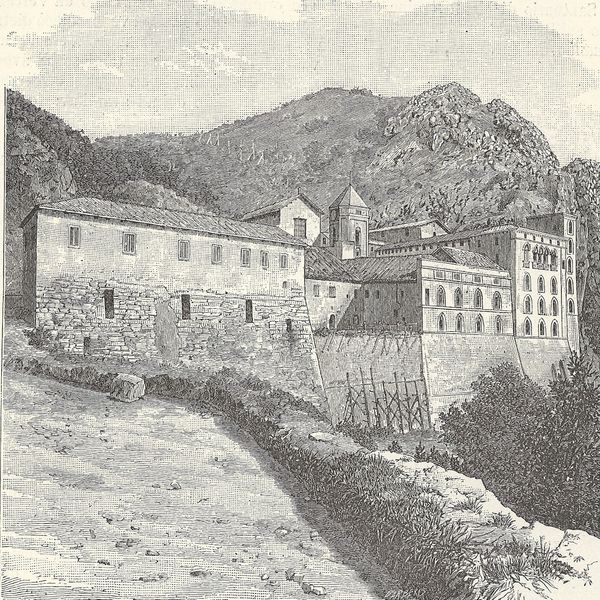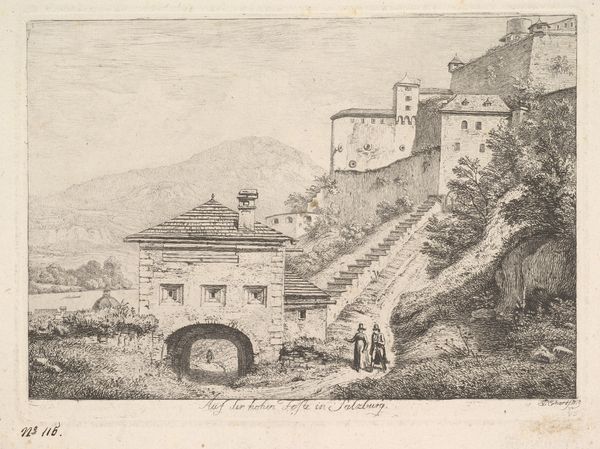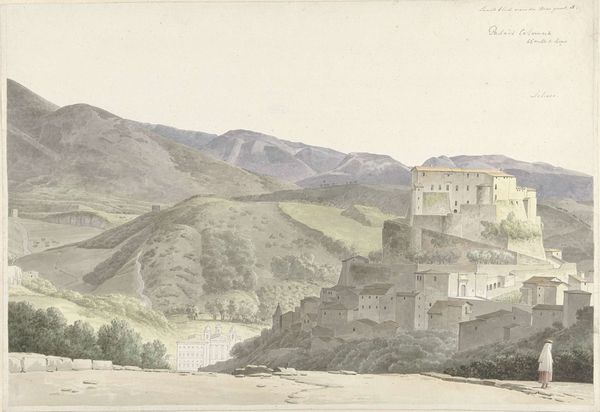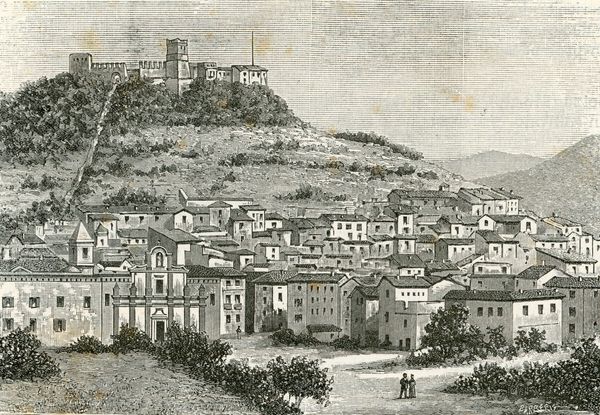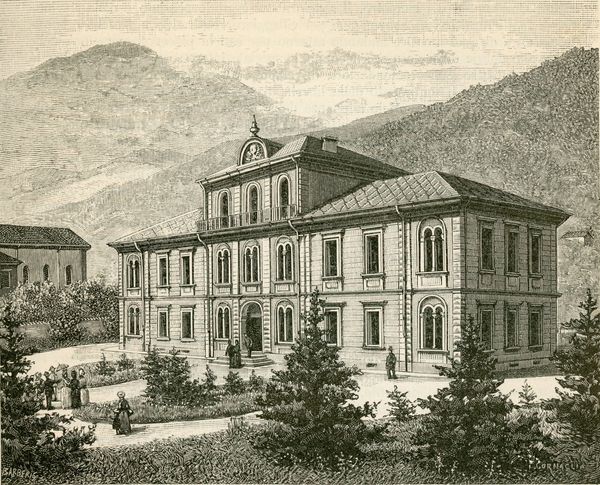
Dimensions: support: 320 x 437 mm
Copyright: CC-BY-NC-ND 4.0 DEED, Photo: Tate
Curator: John Warwick Smith's watercolor, "Covent of La Trinità near La Cava," at the Tate, presents a serene Italian landscape. It whispers of quiet contemplation, doesn’t it? Editor: It does—almost too quiet. This architecture feels like a fortress. Note how Smith positions the figure as a tiny speck, dwarfed by the convent's imposing structure. Curator: Yes, the scale amplifies a sense of isolation and perhaps the individual's place within a larger spiritual order. The layered composition, the water in the foreground, leading to this formidable architecture feels, oppressive. Editor: Oppressive, or perhaps reflective of the power dynamics inherent in religious institutions? Smith’s technique, the delicate washes of color, ironically soften what is essentially a display of institutional power. Curator: I see what you mean! It's a push and pull between aesthetic beauty and the underlying power structures. It’s thought-provoking. Editor: Indeed. Looking closer, it reminds me that even the most picturesque scenes can be imbued with complex social and historical contexts. Curator: It makes you want to look beyond the surface of things.
Comments
tate 8 months ago
⋮
http://www.tate.org.uk/art/artworks/smith-19-covent-of-la-trinita-near-la-cava-t08506
Join the conversation
Join millions of artists and users on Artera today and experience the ultimate creative platform.
tate 8 months ago
⋮
'Warwick' Smith spent five years in Italy from 1776 to 1781. Between March 1778 and July 1779 he was in Naples, and during the summers of those two years took lodgings east of the city on the coast at Vietri, which overlooks the Gulf of Salerno. This watercolour shows the Benedictine abbey of La Trinità near the village of Corpo La Cava, which is situated a little inland from Vietri. It is one of a number of views of Naples and the vicinity by Smith in the Oppé Collection which were once mounted in an album. After Smith returned to England, he produced many variant versions of his Italian compositions. Many of these were made for exhibition and sale at the Society of Painters in Watercolour, of which he became a full member in 1806. Gallery label, August 2004
